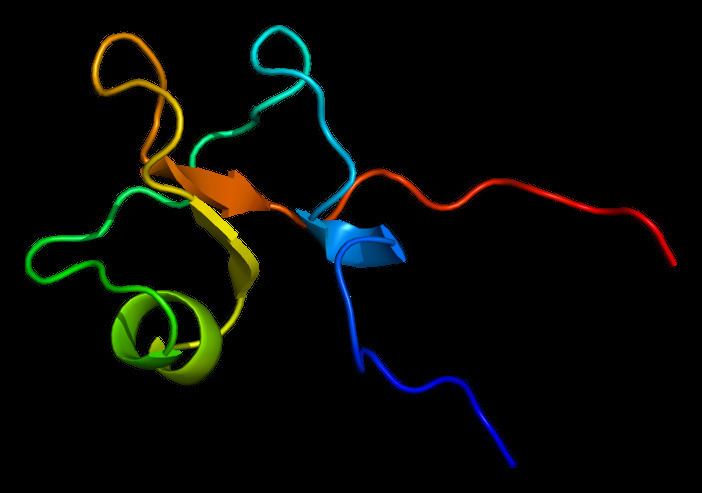Entrez 7033 | Ensembl ENSG00000160180 | |
 | ||
Aliases TFF3, ITF, P1B, TFI, trefoil factor 3 External IDs MGI: 104638 HomoloGene: 2427 GeneCards: TFF3 | ||
Function
Members of the trefoil family are characterized by having at least one copy of the trefoil motif, a 40-amino acid domain that contains three conserved disulfide bonds. They are stable secretory proteins expressed in gastrointestinal mucosa. Their functions are not defined, but they may protect the mucosa from insults, stabilize the mucus layer and affect healing of the epithelium. This gene is a marker of columnar epithelium and is expressed in a variety of tissues including goblet cells of the intestines and colon. This gene and two other related trefoil family member genes are found in a cluster on chromosome 21.
In breast milk
Trefoil factors (TFF) are secretory products of mucin producing cells. They play a key role in the maintenance of the surface integrity of oral mucosa and enhance healing of the gastrointestinal mucosa by a process called restitution. TFF comprises the gastric peptides (TFF1), spasmolytic peptide (TFF2), and the intestinal trefoil factor (TFF3, this protein). They have an important and necessary role in epithelial restitution within the gastrointestinal tract. Significant amounts of TFF are present in human milk. Evidence has been presented that TFF3 isolated from milk strongly correlates with downregulation of IL-6 and IL-8 in human intestinal epithelial cells. On the other hand, TFF3 activated the epithelial cells in culture to produce beta defensins 2 (hBD2) and beta defensins 4 (hBD4). These findings suggest that TFF can activate intestinal epithelial cells and could actively participate in the immune system of breastfed babies by inducing the production of peptides related to innate defence, such as defensins.
Activation of PAR-2 receptors
Two main mechanisms have been described for the activation of PAR-2: (A) by specifi c cleavage that unmask the receptor-activating peptide sequence present in the extracellular N-terminal domain of each PAR, leading to cell signaling via interaction of the exposed tethered ligand with the body of the receptor itself; and (B) by synthetic peptides, such as SLIGKV, that bind to the receptor, mimicking the actions of agonist proteases. During lactation, TFF3 secreted in human milk may activate intestinal epithelial cells through PAR-2 receptors, which in turn induces hBD2 and hBD4 expression and cytokine regulation.
Clinical significance
Using TFF3 as a marker of columnar epithelium, a process using an ingestible oesophageal sampling device (Cytosponge) coupled with immunocytochemistry for trefoil factor 3 to improve the accuracy and acceptability of the detection/screening of Barrett's oesophagus has been developed. However the clinical utility of such a test may be limited by frequent staining of TFF3 in gastric cardia and subsequent risk of false positives.
